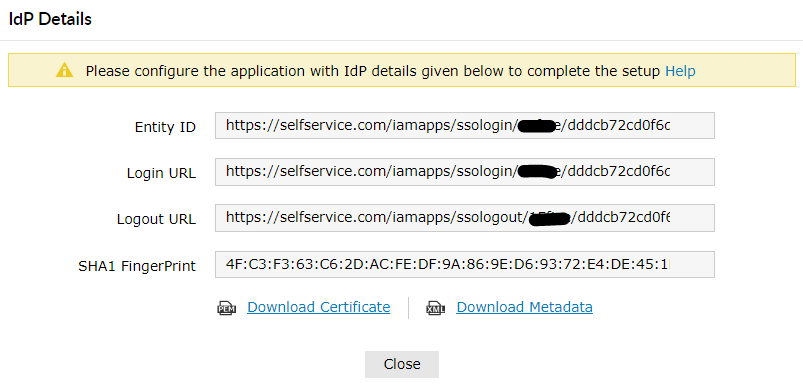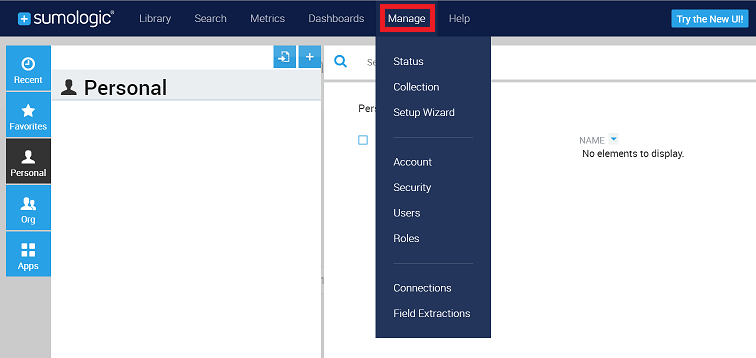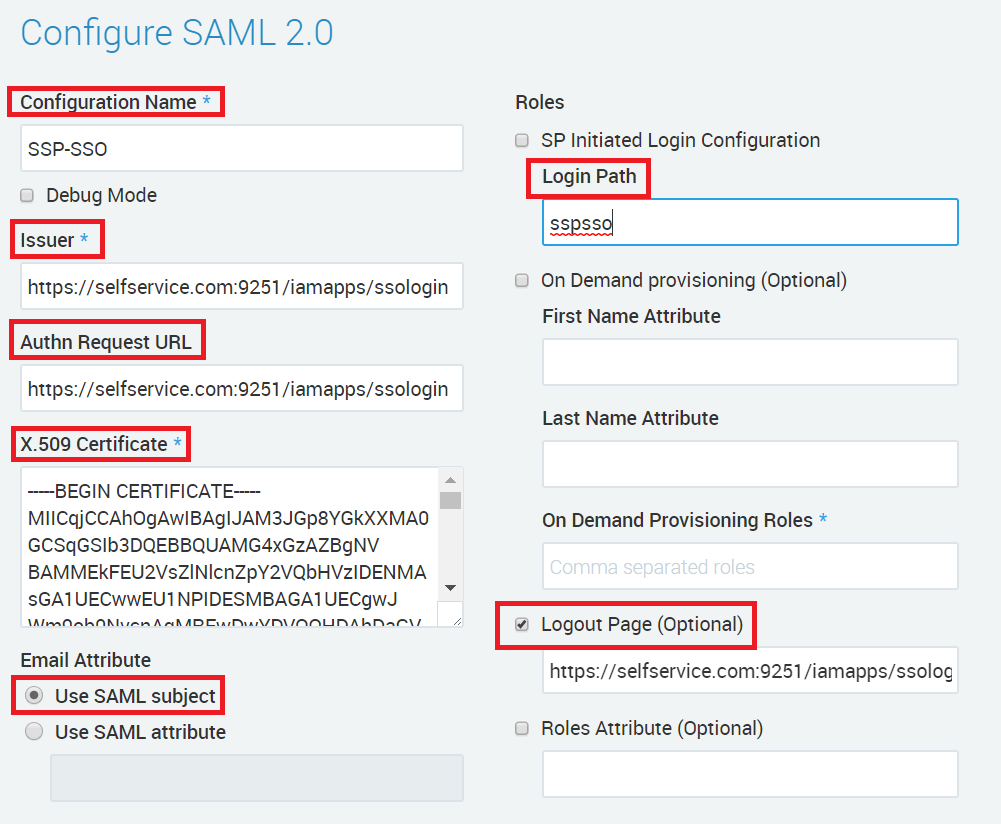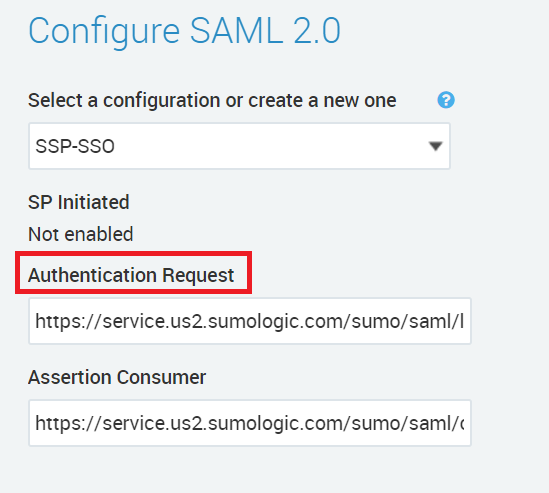Configuring SAML SSO for SumoLogic
These steps will guide you through setting up the single sign-on functionality between ADSelfService Plus and SumoLogic.
Prerequisite
-
Log in to ADSelfService Plus as an administrator.
- Navigate to Configuration → Self-Service → Password Sync/Single Sign On → Add Application, and select SumoLogic from the applications displayed.
Note: You can also find SumoLogic application that you need from the search bar located in the left pane or the alphabet wise navigation option in the right pane.
-
Click IdP details in the top-right corner of the screen.
-
In the pop-up that appears, copy the Login URL and download the SSO certificate by clicking on the Download SSO Certificate button.

SumoLogic (Service Provider) configuration steps
-
Login to SumoLogic portal with an administrator’s credentials.
-
Navigate to Manage → Security.

-
Click on the SAML button in the topright corner of the screen.

-
In the Configuration Name field, enter an identification name.
-
In both the Issuer and Authn Request URL fields, enter the Login URL copied in the Step 4 of Prerequsite.
Note:
The login URL must be in the format https://domainname.com/*

-
Open the SSO certificate downloaded (rsacert.pem) in Step 4 of Prerequisite and paste its content in the X.509 Certificate field.
-
In the Email Attribute field, select “Use SAML subject”.
-
Mark the check-box against SP initiated Login Configuration in the Roles field. In the Login Path field, enter a login path (for example: sspsso).
-
Click Save to complete the configuration.
-
Click on the SAML button in the topright corner of the screen.
-
Copy the value in the Authentication Request field.

ADSelfService Plus (Identity Provider) configuration steps
-
Now, switch to ADSelfService Plus’ SumoLogic configuration page.
-
Enter the Application Name and Description.
-
In the Assign Policies field, select the policies for which SSO need to be enabled.
Note:ADSelfService Plus allows you to create OU and group-based policies for your AD domains. To create a policy, go to Configuration → Self-Service → Policy Configuration → Add New Policy.
-
Select Enable Single Sign-On.
-
Enter the Domain Name of your SumoLogic account. For example, if you use johndoe@thinktodaytech.com to log in to SumoLogic, then thinktodaytech.com is the domain name.
-
In the SAML Redirect URL field, enter the value you copied in Step 11 of SumoLogic configuration.
-
Choose the Name ID format that has to be sent in the SAML response. The Name ID format will specify the type of value sent in the SAML response for user identity verification.
-
Click Add Application
Your users should now be able to sign in to SumoLogic through ADSelfService Plus.
Note:
For Sumologic, only IDP initiated flow is supported.




